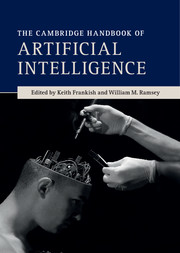5 - Connectionism and neural networks
Published online by Cambridge University Press: 05 July 2014
Summary
Connectionism and neural networks have become a mainstay of artificial intelligence and cognitive science. Nowadays, conferences on neural networks from the perspective of artificial intelligence (or computational intelligence, as some would put it) are held regularly and are usually fairly well attended (such as International Joint Conferences on Neural Networks). At major cognitive science conferences, work based on connectionist models usually occupies a major place. In many engineering conferences and journals, work utilizing neural network models is commonplace. Their popularity and appeal have reached a stable state in a sense. In other words, they have become an integral part of the study and the exploration of intelligence and cognition.
In this chapter, I will first review briefly the history of connectionist models, identifying major ideas and major areas of applications, and then move on to address the issue of symbolic processing in connectionist models; finally, I will expand the discussion to hybrid connectionist models, which incorporate both connectionist and symbolic processing methods.
Keywords
Information
- Type
- Chapter
- Information
- The Cambridge Handbook of Artificial Intelligence , pp. 108 - 127Publisher: Cambridge University PressPrint publication year: 2014
References
Accessibility standard: Unknown
Why this information is here
This section outlines the accessibility features of this content - including support for screen readers, full keyboard navigation and high-contrast display options. This may not be relevant for you.Accessibility Information
- 13
- Cited by
